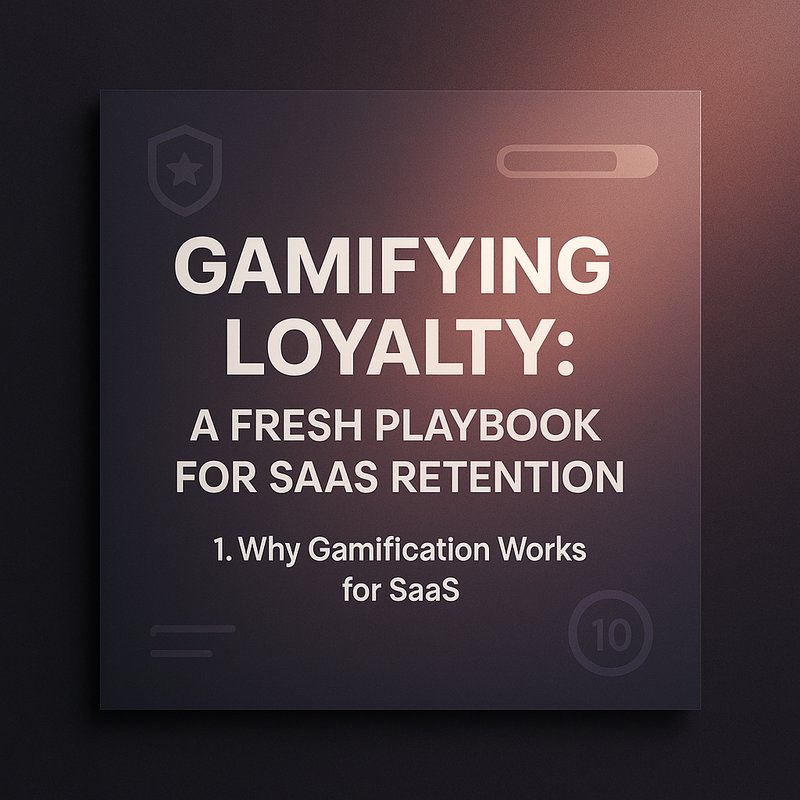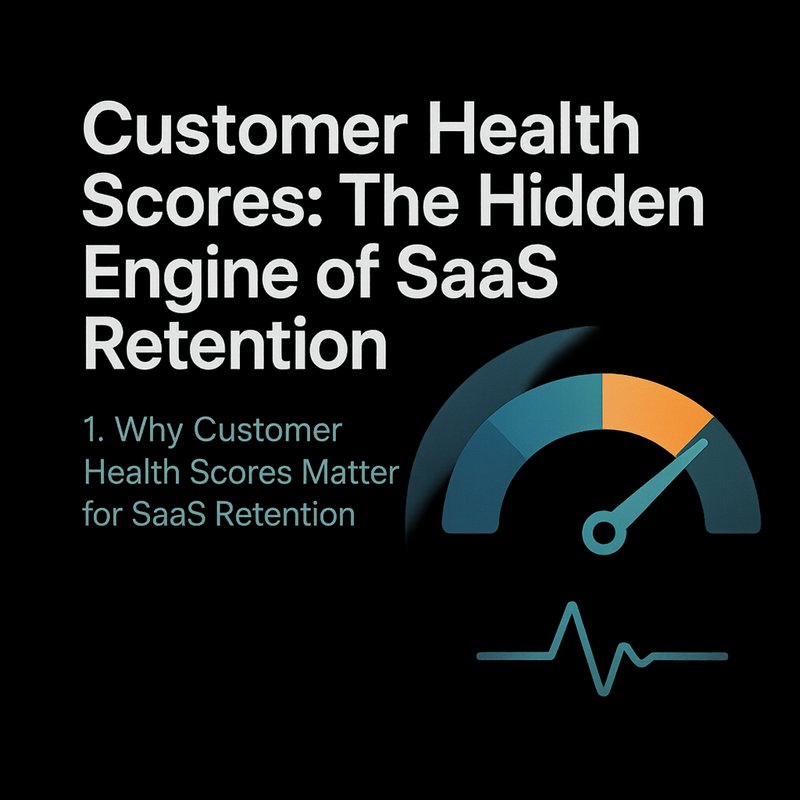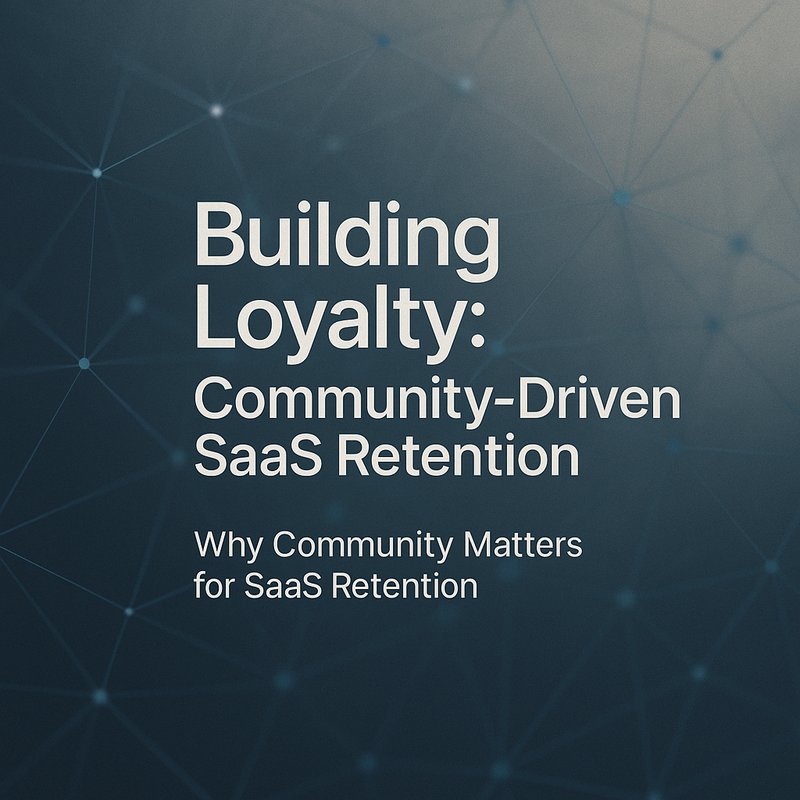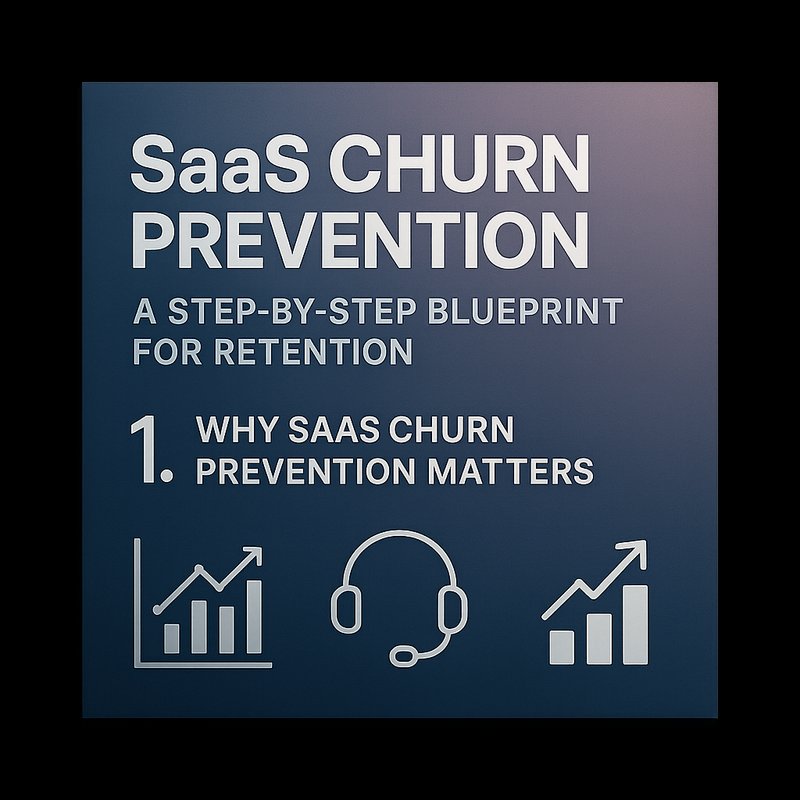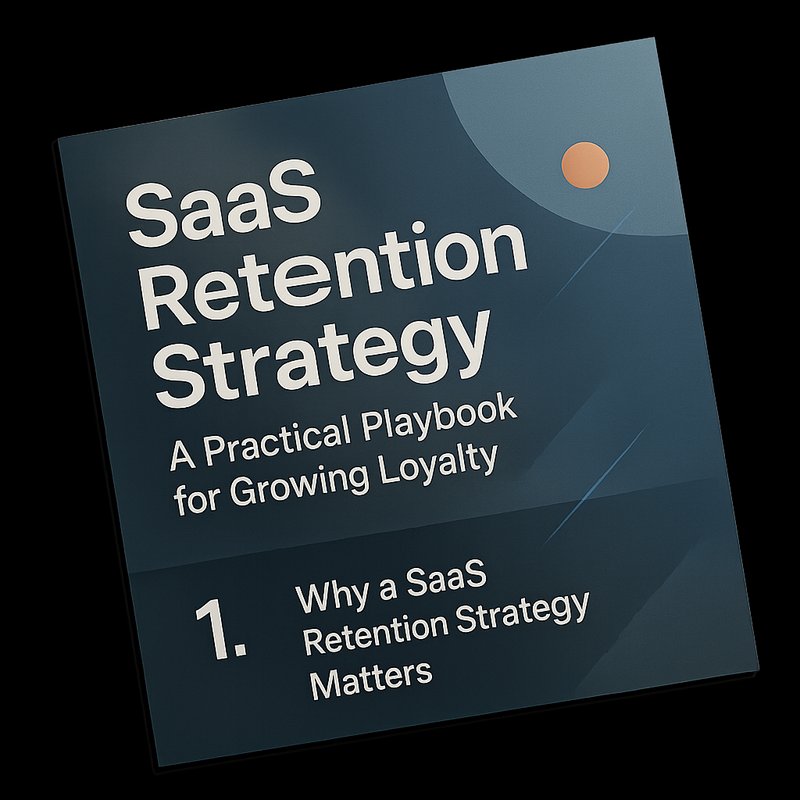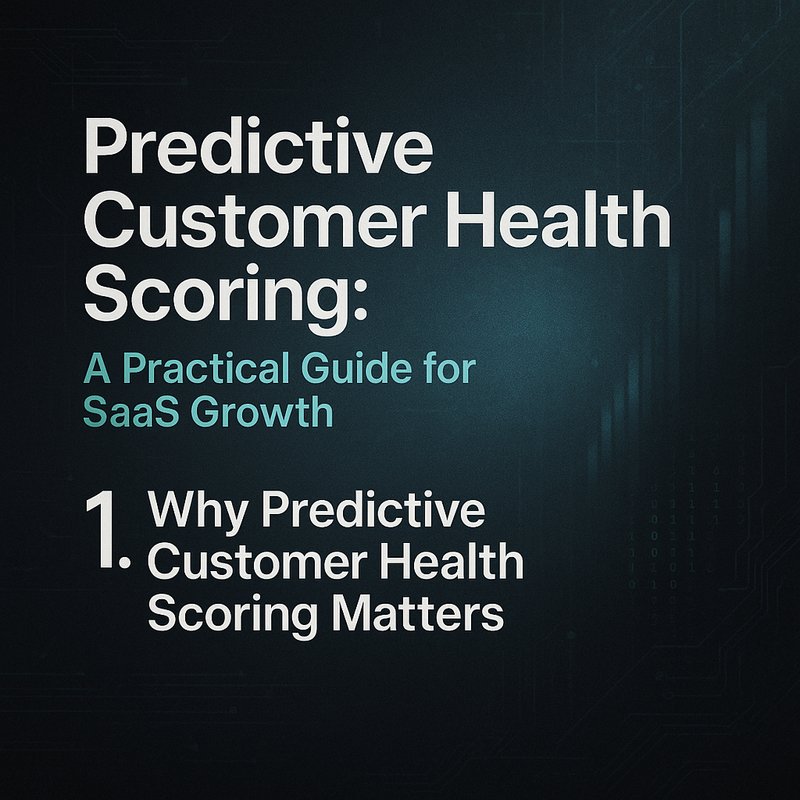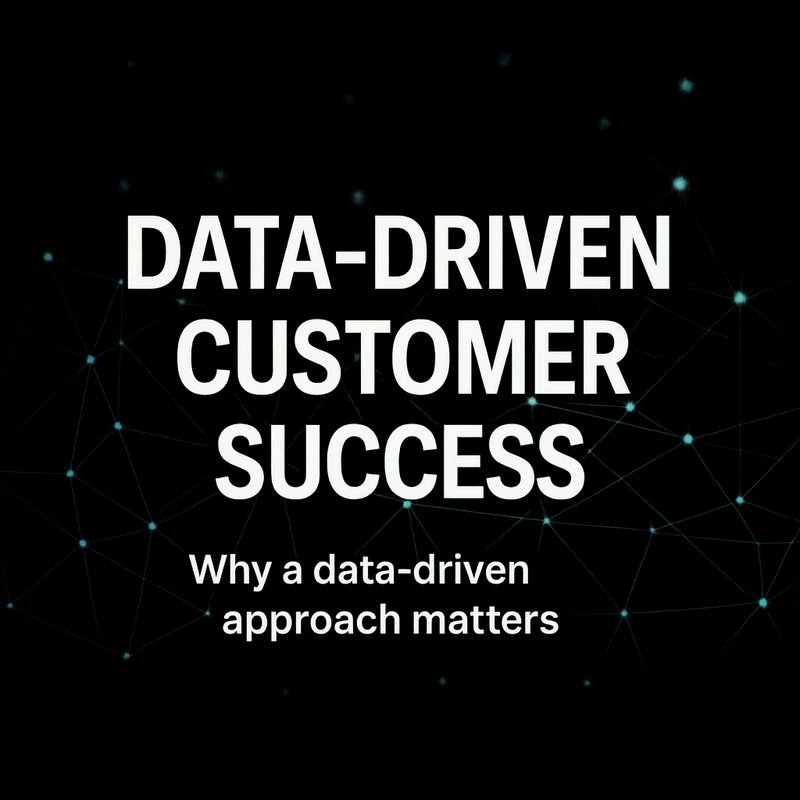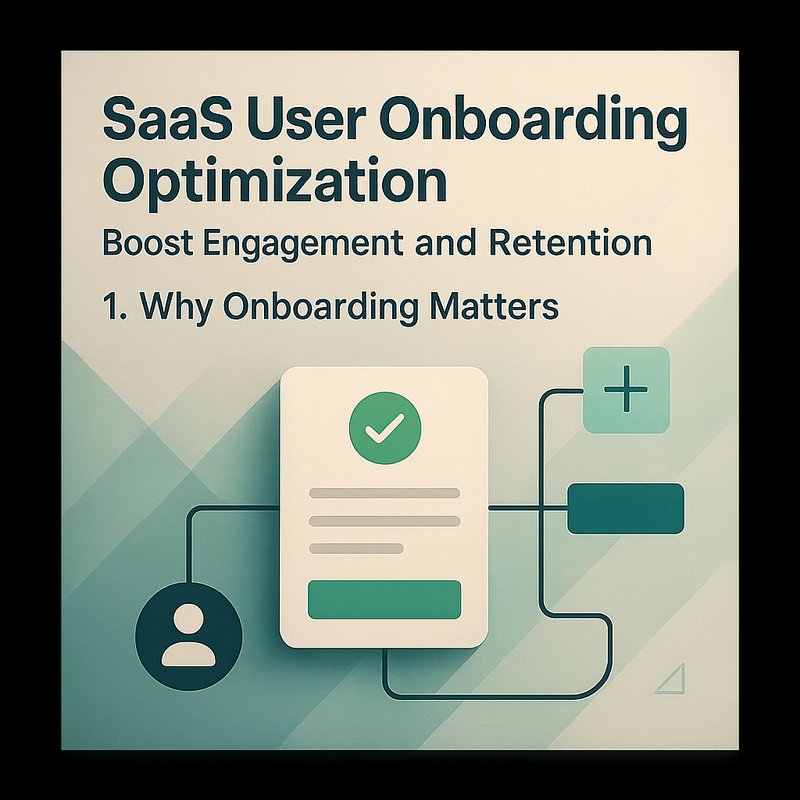When you think of SaaS retention, the first things that pop into mind are usually data dashboards, churn scores, or email nudges. Those are great, but they’re only part of the picture. What if you could turn everyday usage into a game that rewards users for staying, exploring, and advocating?
Gamification—adding game‑like elements to non‑game contexts—has proven to boost engagement in education, fitness, and even banking. In the SaaS world, it can transform a routine subscription into an experience that feels rewarding and sticky.
This guide walks you through how to design, launch, and measure a gamified loyalty program that keeps customers coming back, reduces churn, and turns users into brand ambassadors.
1. Why Gamification Works for SaaS
People love to win. Even a small badge or a leaderboard tick can spark curiosity and a sense of progress. In SaaS, gamification taps into:
- Progress tracking – Users see how far they’ve come and what’s next.
- Social proof – Leaderboards and shared achievements create friendly competition.
- Immediate rewards – Points, discounts, or feature unlocks give instant gratification.
- Community building – Users collaborate to reach shared goals.
When these elements are woven into the product, the result is a loop that encourages frequent logins, deeper feature use, and a stronger emotional bond with the brand.
2. Core Components of a Gamified Loyalty Program
| Element | What It Does | Example |
|---|---|---|
| **** | Earned for actions (e.g., completing a tutorial, inviting a friend). | 10 points for each new dashboard created. |
| Badges | Visual symbols for milestones (e.g., “Power User” after 30 days). | Badge for “First API Call.” |
| Levels | Tiered status that unlocks perks (e.g., Bronze → Silver → Gold). | Gold users get a free feature add‑on. |
| Leaderboards | Rank users by points or activity. | Top 10 users in the last month. |
| Challenges | Time‑bound tasks that encourage exploration. | “Use the new reporting tool this week.” |
| Rewards | Tangible benefits (discounts, free months, exclusive content). | 15% off next renewal for reaching Level 3. |
3. Designing the Experience
3.1 Start with User Personas
Identify the segments that will benefit most from gamification. A SaaS that offers project management tools might target:
- New users – Need to learn core features.
- Power users – Already use many features but could unlock more.
- Referral advocates – Likely to bring in new customers.
Tailor challenges and rewards to each group.
3.2 Map the Game Flow
Create a simple flowchart that shows how users move from one stage to the next:
- Onboarding – Earn points for completing the first tutorial.
- Daily Use – Collect points for logging in, creating items, or using advanced features.
- Social Sharing – Gain badges for inviting teammates or sharing success stories.
- Level Up – Unlock new perks and access to beta features.
- Community Events – Participate in monthly challenges to win extra rewards.
Keep the path clear and visible. A progress bar or dashboard widget helps users see how close they are to the next level.
3.3 Choose the Right Reward Mix
Balance intrinsic and extrinsic motivators:
- Intrinsic – Mastery of the product, sense of achievement.
- Extrinsic – Discounts, free months, exclusive content.
Avoid over‑relying on discounts; they can erode perceived value. Instead, use them sparingly as a bonus for reaching high levels.
4. Technical Implementation
4.1 Data Tracking
You’ll need to capture events that trigger points or badges. Common events include:
- Feature usage (e.g., “created a report”).
- Time spent in the app.
- Social actions (e.g., “shared a dashboard”).
- Referral clicks.
Use your existing analytics stack (Google Analytics, Mixpanel, or a custom data warehouse) to log these events. If you’re already using Neura ACE for content automation, you can extend it to track gamification events and push updates to your dashboard.
4.2 Backend Logic
Implement a lightweight service that:
- Calculates points per event.
- Checks badge criteria.
- Updates user level.
- Sends notifications.
You can host this as a serverless function or a microservice. If you prefer a no‑code approach, consider using a workflow tool like Zapier or Integromat to tie events to point updates.
4.3 Frontend Integration
Add a Gamification Widget to your app:

- Show current points, level, and next milestone.
- Display a leaderboard (public or team‑only).
- Offer a “Challenge” button that lists available tasks.
Keep the UI minimal so it doesn’t clutter the main workflow. Use subtle animations to celebrate achievements.
4.4 Notifications
Send timely alerts when users earn points or unlock badges. Use email, in‑app messages, or push notifications. Keep the tone celebratory: “You just hit 200 points—keep going!”
5. Launching the Program
5.1 Pilot with a Small Group
Pick a subset of users (e.g., 200 active accounts) to test the program. Gather feedback on:
- Clarity of the point system.
- Appeal of rewards.
- Impact on usage patterns.
Use this data to tweak thresholds and reward values before a full rollout.
5.2 Communicate the Value
Create a short explainer video or animated GIF that shows how the gamified system works. Post it on your product page and in the onboarding flow. Highlight the benefits: “Earn points, unlock features, and save on renewals.”
5.3 Monitor Key Metrics
Track:
- DAU/MAU – Did daily logins increase?
- Feature Adoption Rate – Are users exploring new features?
- Churn Rate – Is the program reducing cancellations?
- Referral Rate – Are users inviting more teammates?
Set up alerts for sudden drops or spikes. Adjust the program if certain challenges are under‑used.
6. Measuring Success
| Metric | Why It Matters | Target |
|---|---|---|
| Points Earned per User | Indicates engagement depth | +20% over baseline |
| Level Advancement Rate | Shows progression | 30% of users reach Level 2 |
| Referral Count | Drives growth | 15% increase |
| Churn Rate | Core retention goal | 5% reduction |
| NPS | Customer satisfaction | +5 points |
Use a dashboard (Google Data Studio, Metabase, or a custom Neura dashboard) to visualize these metrics. Include a “Gamification Health” score that aggregates points, levels, and referrals.
7. Common Pitfalls and How to Avoid Them
| Pitfall | Fix |
|---|---|
| Points feel meaningless | Tie points to real value (feature unlocks, discounts). |
| Leaderboard causes burnout | Offer team leaderboards or private groups to keep competition friendly. |
| Rewards are too frequent | Set thresholds that require genuine effort. |
| Gamification feels gimmicky | Keep the design subtle and integrate it naturally into the product flow. |
| No data tracking | Ensure every event that should earn points is logged. |
8. Real‑World Example: A SaaS Company That Grew Retention with Gamification
A project‑management SaaS launched a “Team Quest” challenge where teams earned points for completing collaborative tasks. Within three months:
- DAU rose by 18%.
- Feature adoption of the new collaboration board increased by 25%.
- Churn dropped from 16% to 12%.
- Referral rate climbed by 20%.
The company credited the gamified program for turning routine usage into a competitive, rewarding experience.
9. Quick Implementation Checklist
- [ ] Define user personas and reward tiers.
- [ ] Map event triggers to points and badges.
- [ ] Build or configure a backend service for point calculations.
- [ ] Add a gamification widget to the UI.
- [ ] Set up notifications for achievements.
- [ ] Pilot with a small user group.
- [ ] Collect feedback and iterate.
- [ ] Launch to all users.
- [ ] Monitor metrics and adjust thresholds.
10. Final Thoughts
Gamification isn’t a silver bullet, but when done thoughtfully, it can turn a subscription product into an engaging experience that naturally reduces churn. By rewarding users for learning, using, and sharing, you create a virtuous cycle: more engagement leads to higher satisfaction, which leads to lower churn and more referrals.
Start small, keep the rewards meaningful, and let the data guide your tweaks. Your customers will thank you, and your retention numbers will follow.
